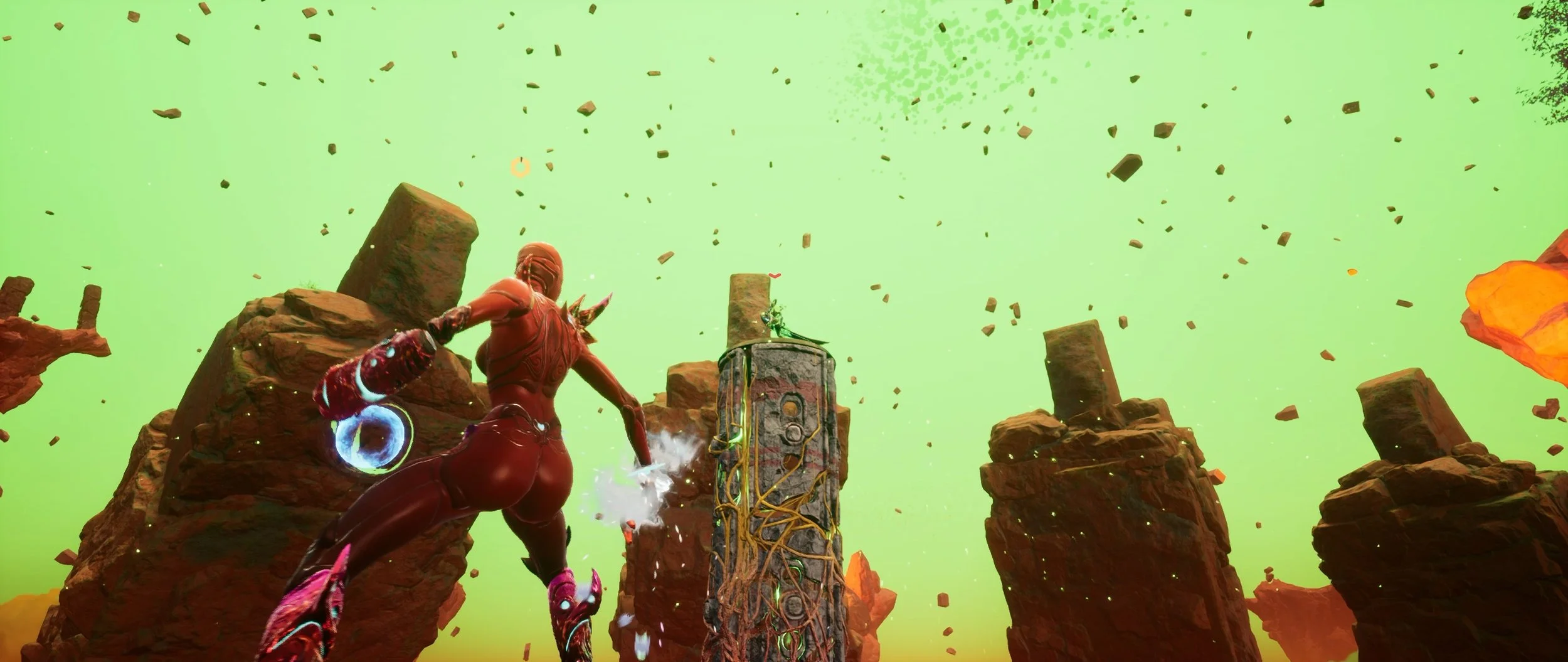Bridging the Gap Between Film and Gaming with Realtime
The boundaries between film and gaming are becoming increasingly blurred, thanks to advancements in technology that are allowing creators to blend the storytelling power of film with the interactivity of games. One of the key players driving this convergence is Unreal Engine, a real-time 3D creation platform originally developed for games but now widely used across the animation industry.
At our studio, we are embracing this intersection of cinematic storytelling and interactive gaming, utilising Unreal Engine to craft experiences that combine the emotional depth of films with the player agency of video games.
Unreal Engine: From Gaming to Filmmaking
Unreal Engine has long been a powerhouse in the gaming world, known for its ability to render highly detailed, real-time 3D environments. But in recent years, the film industry has adopted Unreal Engine for its flexibility and speed and for new working processes such as virtual production. The same tools that enable developers to build expansive, interactive game worlds are now being used by filmmakers to design virtual sets, pre-visualise complex sequences, and even shoot entire scenes using real-time rendering.
This has revolutionised film production, providing directors with the ability to see final visuals on set, in real-time, instead of waiting for post-production. Virtual cameras can move through fully-rendered 3D environments, just like in a game, giving filmmakers unprecedented creative control and flexibility.
Cinematic Storytelling in Games
While film directors are using Unreal Engine to visualise their worlds, game developers are leveraging its cinematic tools to enhance storytelling. Games have evolved from being primarily action-focused to offering rich, narrative-driven experiences, with cutscenes and interactive storytelling that rival traditional films in emotional impact.
Using Unreal Engine’s real-time rendering and powerful visual effects, game creators can craft cinematic moments that seamlessly blend into gameplay. The line between cutscene and interaction is becoming almost invisible, making players feel like they are truly part of the story.
Our studio has taken these principles to heart, using Unreal Engine to create game worlds that feel alive, with characters that express emotion in real-time and environments that respond to player choices. By combining film-level cinematics with interactive gameplay, we offer players experiences that are as emotionally engaging as watching a movie, yet as immersive as playing a game.
Cross-Industry Experiences: The Best of Both Worlds
At the heart of this convergence is the ability to create cross-industry experiences that blur the lines between passive viewing and active participation. Imagine a world where you’re not just watching a cinematic scene unfold—you’re part of it. This is the future Unreal Engine is enabling, and we are at the forefront of this exciting new frontier.
We are exploring the world of UEFN (Unreal Engine for Fortnite) as a tool to bring these experiences together, looking into how we can create cinematic content which can be experienced in a more interactive and engaging way than traditional media. This is particularly relevant to younger Gen Z and Gen A audiences, who are moving away from traditional media and spending time on platforms such as Fortnite and Roblox.
Trans-Media Opportunities: Taking Investment Further
Transitioning to a real-time pipeline has transformed our approach, offering not only increased efficiency and creative flexibility for linear animation, but also unlocking many possibilities beyond traditional media. By producing animation directly within Unreal Engine, we’re able to seamlessly repurpose the same assets across multiple platforms—whether it’s creating films, interactive games, immersive VR experiences, or dynamic video wall content. This cross-platform capability eliminates the need to rebuild assets for each medium, allowing us to deliver high-quality content across diverse formats with speed and consistency.
Real-Time Creativity and Efficiency
One of the most exciting aspects of using Unreal Engine in both film and gaming is the speed and flexibility it offers. In traditional filmmaking, creating a fully realised world or complex visual effects sequence can take months. With Unreal Engine, we can build entire environments, animate characters, and render scenes in real-time.
For game development, this means faster iterations and the ability to experiment with different storytelling approaches on the fly. For film production, it means immediate feedback on visual effects and seamless collaboration between departments. This real-time creativity allows us to make decisions quickly, explore new ideas, and push creative boundaries without the typical time constraints.
Conclusion: The Future of Interactive Storytelling
The convergence of film and gaming through platforms like Unreal Engine is opening up new possibilities for interactive storytelling. Our studio is excited to be at the forefront of this revolution, creating experiences that merge the emotional resonance of film with the shared experience and interactivity of games. As technology continues to evolve, the gap between these two industries will only shrink further, allowing creators to produce richer, more engaging narratives than ever before.
Whether you’re looking to create a game with cinematic storytelling or a film with interactive elements, softwares like Unreal Engine are opening up new opportunities to do so, and with our expertise in both animation and interactive design, we’re ready to help you bridge the gap between film and gaming, crafting experiences that captivate and engange audiences in entirely new ways.



